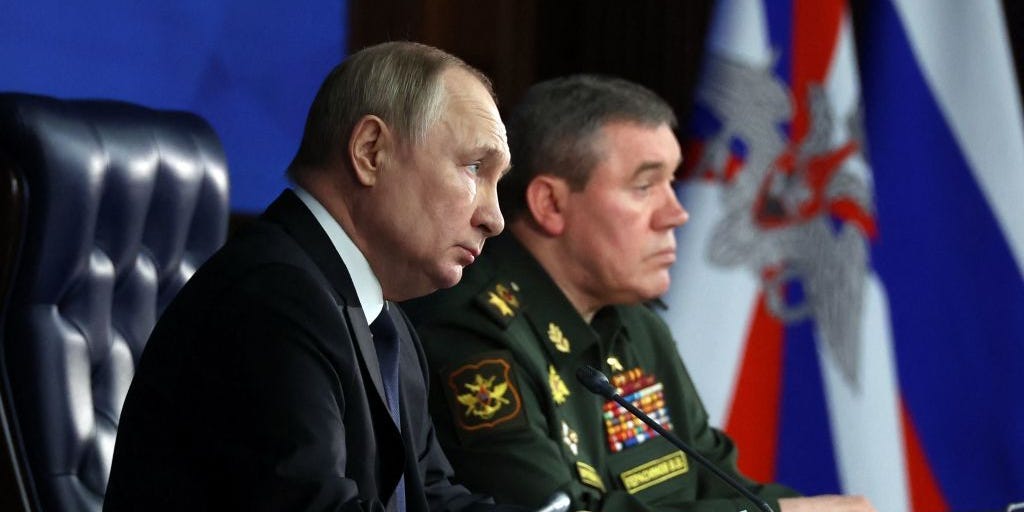Russia’s ruble jumped 5% against the dollar on Wednesday as the Kremlin mulls capital controls. President Vladimir Putin reportedly held talks with officials on ways to prop up the ruble. The ruble crashed Monday, and on Tuesday Russia’s central bank raised its benchmark rate to 12% from 8.5%. Loading Something is loading.
Thanks for signing up!
Access your favorite topics in a personalized feed while you’re on the go.
Russia’s currency spiked against the dollar on Wednesday, just two days after it crashed to less than a penny.
The ruble climbed roughly 5%, hovering around 94 per dollar, after a report said President Vladimir Putin planned talks on potential capital controls.
Sources told the Financial Times that Putin was set to hear proposals Wednesday from the finance ministry that include forcing exporters to sell up to 80% of their foreign currency revenue, capping currency swaps, and limiting how much foreign currency exporters can move out of Russia.
Other proposals include a ban on paying dividends and doing out loans overseas, even to supposedly “friendly” countries, and an end to import subsidies, according to the FT.
That meeting was due to follow an earlier one where Kremlin officials met with exporters to discuss reviving a requirement on companies to sell foreign exchange revenue, according to Bloomberg.
It took place before the central bank raised its key interest rate from 8.5% to 12% on Tuesday. The rate hike came during an emergency session, after the ruble fell as low as 102 per dollar on Monday.
The ruble is among the world’s worst-performing currencies and has fallen about 23% against the dollar so far this year.
After Putin launched his war on Ukraine last February, Moscow soon fell under historic sanctions that isolated it from the global financial system. The Kremlin then turned to a host of emergency capital controls as well as sharp rate hikes to stabilize the ruble.
While the currency initially rebounded, it has been sliding again in recent months as the overall Russian economy deteriorates, export revenue weakens, and military spending ramps up.
